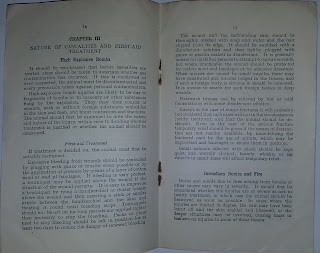This photo was one of a batch of press photos I purchased from an auction from a seller in the US.
Dated 11th June (1944) it shows columns of German POWs in a barbed wire compound
The photo was taken by 'Shivers' of the US Signal Corps. The caption, stamped on the rear of the photo, says:
Here's one Hitler promise which came true - in part. These Germans set foot on English soil, but not quite according to the Fuehrer's plan. Instead of coming as conquerors, they reach England as prisoners of war and arrive in ever-increasing numbers as the Allied Forces move onto the Continent.
There is a SHAEF Field Press Censor stamp, a 'Confidential' stamp, and a handwritten note
'Cut on fold'.
But where was the photo taken?
The first clue was the fact the photo was taken by the US Signal Corps, and the two men in the centre of the photo, marching down the column, are in US Army uniforms.
The US Army used a number of ports in England to supply their troops during the campaign in North West Europe. And while these ports were used to despatch materials to the Continent, they were also used to receive wounded and POWs.
One of the largest and busiest ports used by the US Army for supplies was Portland, in Dorset. Other ports were further away from Normandy, or where being used by the British Army. So I thought this may be the place. I was also aware that there were US Army hospitals in the Weymouth area where POWs were also treated and these POWs were obviously captured in Normandy due to the date.
The big clue is of course the houses in the background. These have been edited by the censor, and any published version of the photo would not include these, to ensure the location was difficult to identify. They back onto a large cliff or hill, and in front there is a graveyard or cemetery.
So, with these ideas I turned to Google Maps. Portland is correctly called the
Isle of Portland - it is not an island separated from the mainland, but it is a large limestone 'isle' joined by a thin strip of land. It has one of the largest man-made harbours in the world, and is a Royal Naval base.
A quick check of cemeteries on the island identified the location of the photo. It was taken on ground in front of the Strangers Cemetery at the northern tip of the isle.
The large houses are still there - as can be seen in the image above, but the POW compound has been wiped away, with an estate of houses and new roads in its place. The compound would have been immediately behind the wall on the left of the image. Unfortunately the new houses make any attempt at a comparison photo impossible.
The new roads have however kept some reflection of history in their names - Officers Field and Victory Road.















 British and French POWs being marched towards the Belgian border
British and French POWs being marched towards the Belgian border While the reviews of Christopher Nolan's Dunkirk have been overwhelmingly positive, some criticism as been leveled due to the lack of French troops in the movie. Many of the troops fighting in French uniform were from the French colonies, including Senegal, Mauritania and Niger. German troops, as pictured above, often took photos of these men when captured, as colonial troops were seen as a novelty to the German soldiers. Over 100,000 French colonial soldiers were held captive during the war. However, despite the smiling faces in this picture, tragically some POWs were killed by their captors close to the battlefield. See the review of
While the reviews of Christopher Nolan's Dunkirk have been overwhelmingly positive, some criticism as been leveled due to the lack of French troops in the movie. Many of the troops fighting in French uniform were from the French colonies, including Senegal, Mauritania and Niger. German troops, as pictured above, often took photos of these men when captured, as colonial troops were seen as a novelty to the German soldiers. Over 100,000 French colonial soldiers were held captive during the war. However, despite the smiling faces in this picture, tragically some POWs were killed by their captors close to the battlefield. See the review of 

























